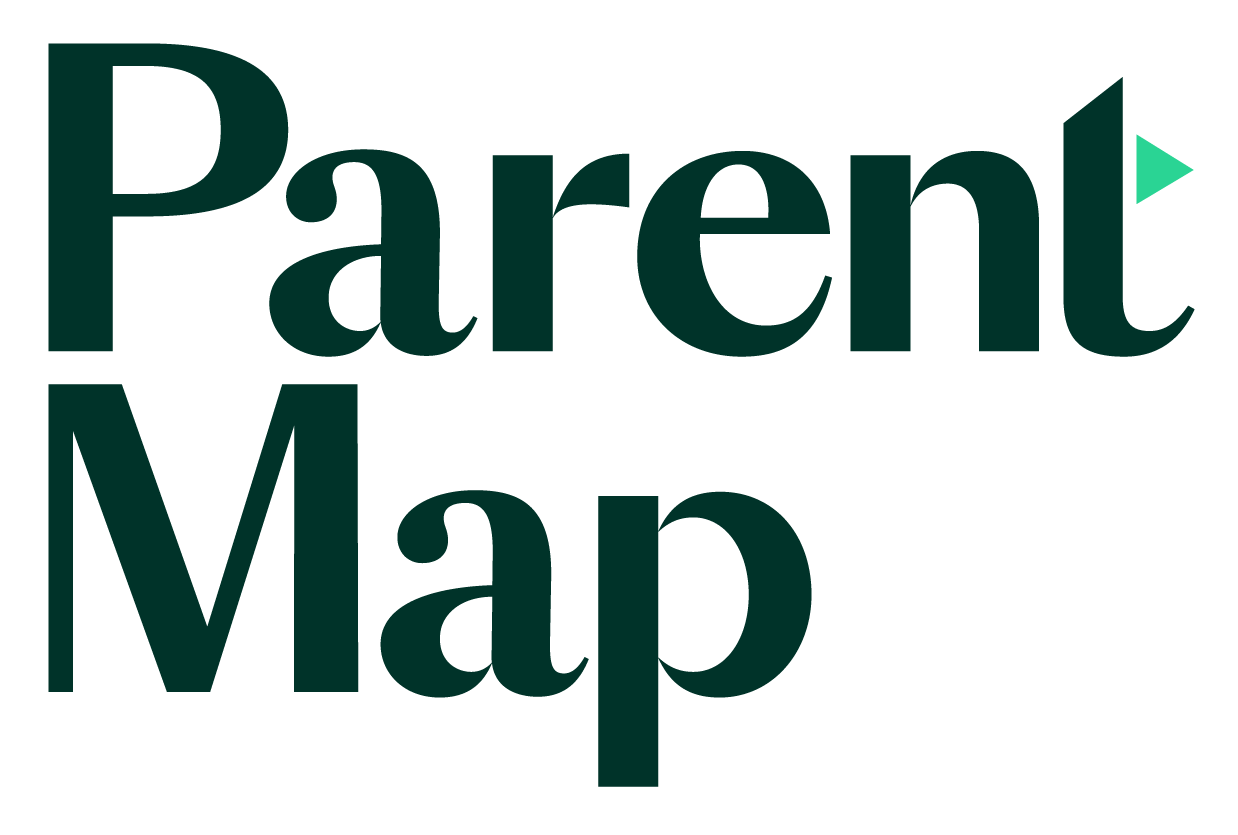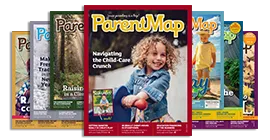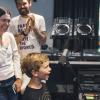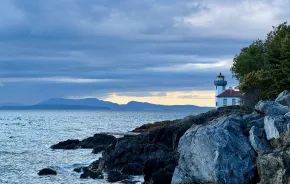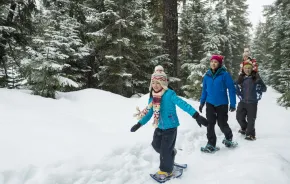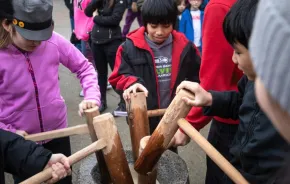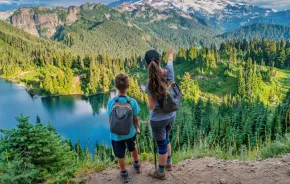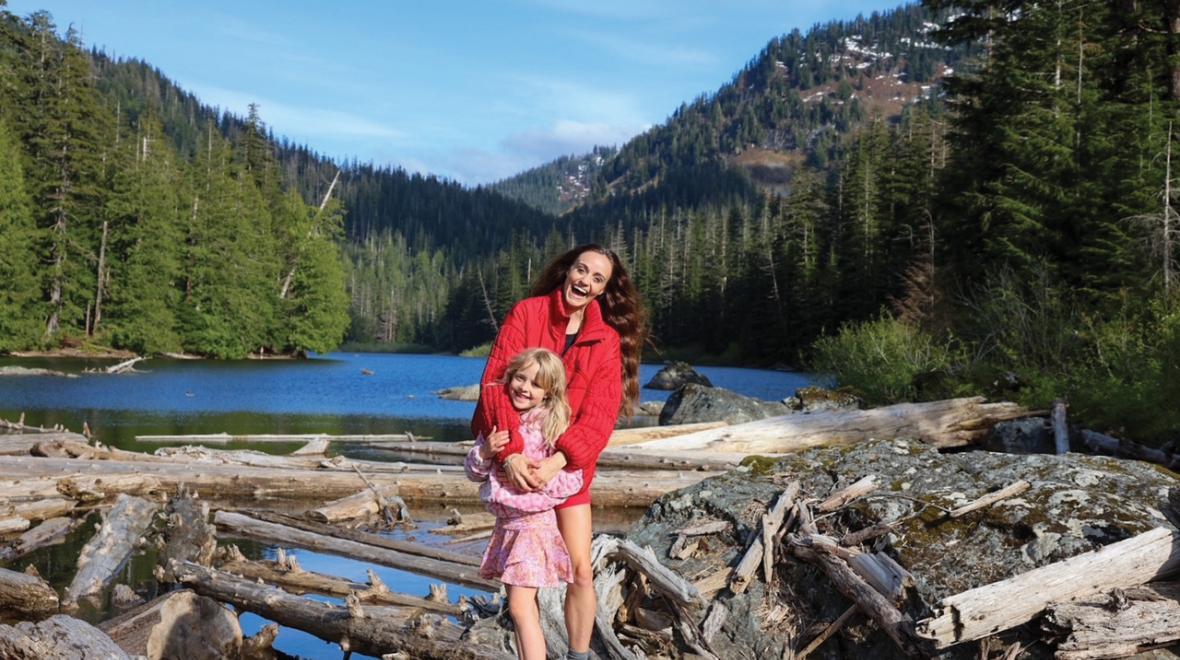
Photo:
Kathryn Mueller
When I first moved to Washington state, I was awestruck by the Pacific Northwest. Towering mountain peaks, meandering trails, lush forests and pristine alpine lakes ignited a sense of wanderlust. I couldn’t explore enough.
When I had kids, our adventures didn’t stop; they just looked a little different. With the littles in tow, we trekked around the state in search of wondrous trails. From Mount Rainier’s sprawling meadows to the rugged, mountainous terrain of the North Cascades, we have been to some incredible places.
Now that hiking has become a mainstay of our family’s weekend plans, we have decided to take the next step. We are gearing up (figuratively and literally) to set out on our first backpacking trip, a fully immersive experience during which we will hike to a campsite tucked into the wilderness and sleep beneath the stars.
But then, when I started to think about where we should go, what we should pack and best practices for backpacking with kids, I came up short. So I sat down with a few local backpacking experts to get their top tips and tricks and am sharing their collective wisdom here.
Start off on the right foot
Andrew Koehn is a camping specialist at REI. He’s also an Eagle Scout and leads his child’s Boy Scout troop den. He grew up hiking and backpacking with his family and now enjoys adventuring with his kids. He says one of the most important things to remember as you begin to backpack is simply to have fun.
“Make sure you have a good time,” he advises. “Watch the weather but also pay attention to attitudes. If it’s not fun, it’s okay to call it. The whole point is to go out and have a good experience.”
When you first begin backpacking as a family, Koehn recommends picking locations that are close to home and aren’t too strenuous, especially for little wanderers. “When you’re just getting your kids out for the first time, you want to be able to go back to the car,” he says.
If you’re 8 miles out into the wilderness when things take a turn for the worse, it’s going to be difficult to bail out, so Koehn suggests keeping trips to a distance of around 3 miles for beginners.
“You’re giving your children exposure early on, and that will make them want to come back,” he continues.
Though Koehn’s next comment seems to contradict that point, he says it’s important to recognize that not every single moment is going to be fun. You are, in fact, carrying a pack on your back and hiking into the forest. Backpacking can be hard at times, but difficult things are often worth doing.
“It’s okay to not like part of a trail,” says Koehn. But positive reinforcement is a great way to keep kids excited about what’s ahead.
“Around this next corner or after this ridge, it’s going to be super awesome,” he says, offering a sample pep talk. Looking forward to those things can help.
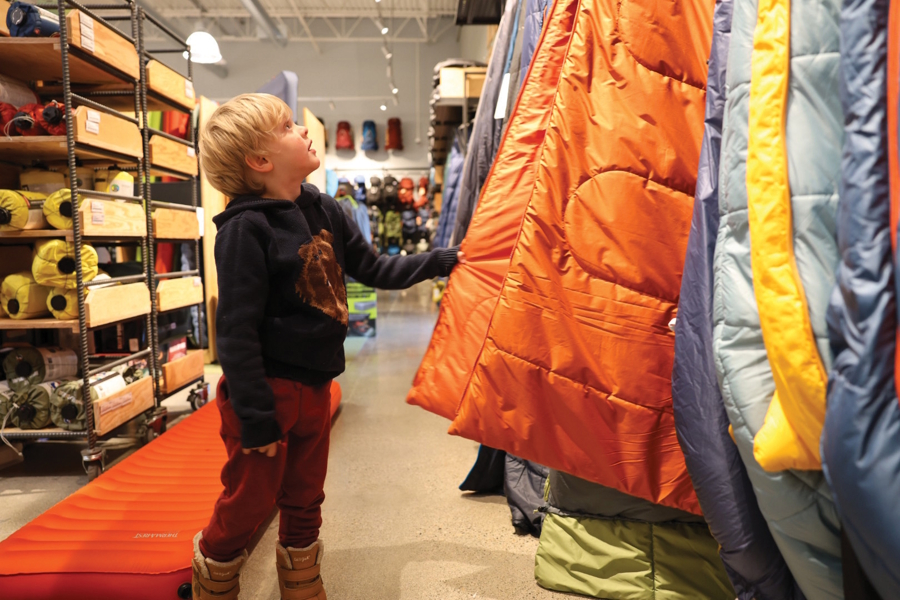
Plan for the best, prepare for the worst
The Pacific Northwest has incredible backpacking options for families, but there are factors to consider before choosing a location. Many high-elevation campsites won’t be accessible until late summer, so for early in the season, pick a backpacking destination at lower elevation (unless you want to camp on snow).
Dreaming about camping by an alpine lake? Remember that snow tends to hang around until July in some areas. Check weather reports. Depending on the weather, you’ll need specific gear. Lastly, read recent trip reports from other hikers and backpackers about conditions they’ve encountered so that you can pack accordingly.
Robyn Denson loves backpacking, and it’s a passion she passed along to her two kids. They first started backpacking as a family when her kids were in elementary school, and she’s picked up a few tricks over the years.
Denson and Koehn both advise backpackers to check the Washington Trail Association (WTA) website before leaving for a trip.
“When planning your trip, look at the recent trip reviews for that particular hike,” says Denson. “You’ll learn things like whether it is super buggy, or if there is still snow or if the water source is drying up.”
What to pack
Whether you’re hiking or backpacking, the Ten Essentials, developed by The Mountaineers, are just that — essential. They include:
- Navigation, such as a map, compass or GPS device
- Headlamp (extra batteries are important, too)
- Sun protection
- First aid
- Knife
- Fire (lighter or stovetop)
- Shelter
- Extra food
- Extra water
- Extra clothes
For backpacking, you’ll also want a light-weight tent, sleeping bag and sleeping pad.
When backpacking, a bear canister to keep curious forest animals away is also recommended. Be sure to put food and anything that has an odor in the bear canister. Koehn recommends placing the canister at least 100 feet away from your campsite before you lay down for the night.
“Look where you put the canister,” he says. “If you look at it and think to yourself, ‘If that were a bear, would I be comfortable being this far away?’ If the answer is no, move it further from camp.”
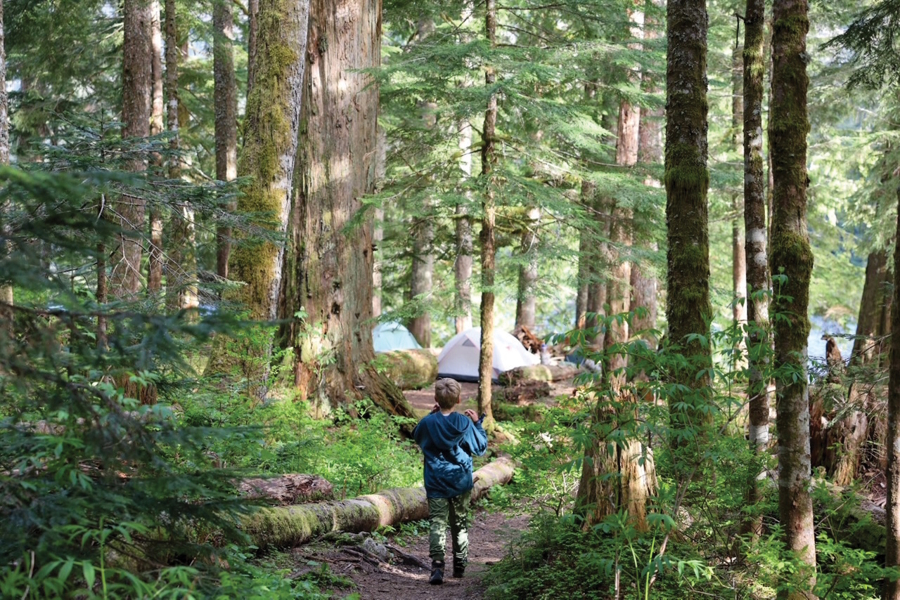
Denson says packing good food is a great idea as well. Again, fun is the goal, and what is more fun than enjoying delicious food in the woods? She says her favorite treats are Oreos and s’mores. Denson also recommends packing snacks for the hike. A good way to keep little feet moving forward while you’re hiking to your destination is to give kids treats along the way.
While Denson’s pack always contains the Ten Essentials, there are also a couple of items she splurges on. Families should also consider packing these little luxuries:
- Solar-powered lantern to put in the tent
- Lightweight camping chair
- Jetboil or similar system for cooking hot meals
Don’t forget entertainment. Playing cards, fishing rods, games and walkie-talkies are a few items that can add some fun to your trip.
Koehn and Denson agree that the challenge is finding a balance when packing. Remember, what you pack goes on your back. Koehn says when he’s backpacking with his kids, they usually carry their sleeping bags and sleeping pads in their packs along with food. The good thing about letting kids carry food is that the weight will get lighter as they snack along the trail. And having them carry backpacks gives them a sense of responsibility.
Beginner backpacking destinations
There are many great backpacking locations around the Pacific Northwest, but here are a few that stand above the rest as good beginner options:
Ancient Lakes
Located in eastern Washington, the Lower Lake Trail at Ancient Lakes is an easy hike with minimal elevation gain. The scenery is breathtaking, with sweeping desert views, waterfalls and lakes that dot the barren landscape. There are plenty of campsites available, and it’s a good location for an early spring backpacking trip. The weather isn’t hot yet, and hopefully, the rattlesnakes will not be out and about. A Discover Pass is required at this location.
Distance: Less than 5 miles round trip with minimal elevation gain (less than 500 feet)
Insider tip: Pack extra water. You can’t drink from the lakes, even with a filter, so plan accordingly. It’ll mean more weight to carry, but there isn’t water available near the campsites.
Snow Lake
Snow Lake is a moderate trail for kids, but it’s close to Seattle. Located near Snoqualmie Pass, it’s an accessible and popular hike. Only about an hour’s drive from the city, Snow Lake is busy for good reason, both for hikers and campers alike. It’s a more strenuous option for kids, but getting to the lake will make the effort worthwhile. Enjoy beautiful mountain views, a pristine, crystal clear lake and established campsites. A Northwest Forest Pass is required.
Distance: 7.2 miles round trip, with 1,800 feet of elevation gain
Parking: Available at the trailhead
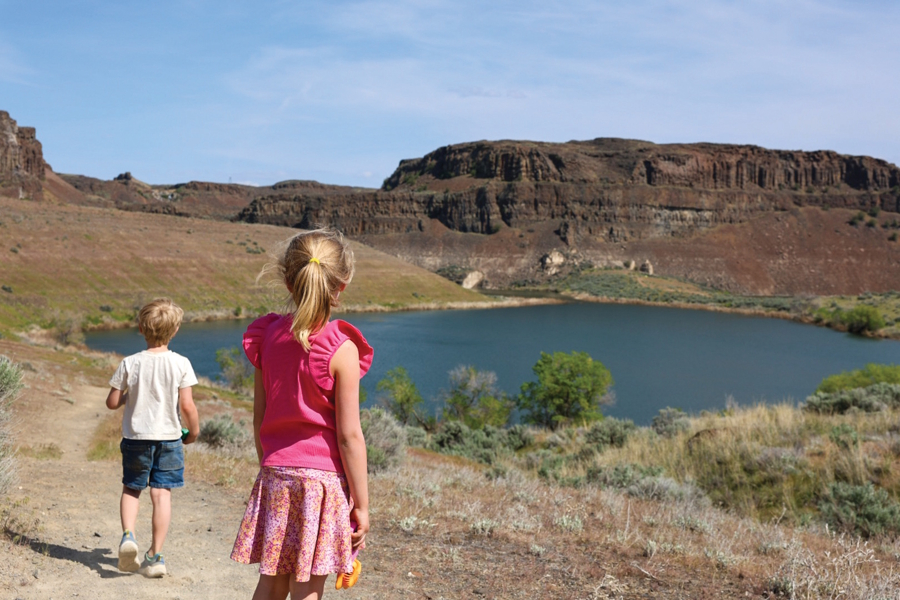
Barclay Lake
Another great option for backpacking near Seattle is Barclay Lake. This short and easy hike has a big payoff. Trek only 2.2 miles through beautiful forests and you’ll be rewarded with a gorgeous lake, and with Baring Mountain looming imposingly just above. It’s a breathtaking sight. Campsites are located around the lake. There are plenty of photo opportunities at the lake, so pack your camera. A Northwest Forest Pass is required.
Distance: 4.4 miles round trip with about 500 feet of elevation gain
Mirror Lake
Mirror and Cottonwood lakes are aptly named. Mirror Lake is nestled in a basin surrounded by mountains, offering beautiful reflective views on the water’s surface. The hike to the lake is only about 1.2 miles. It’s an easy out-and-back trail with very little elevation gain. It’s great for little hikers. There are campsites along the lake's edge, but they do go quickly, so arrive early. A Northwest Forest Pass is required.
Distance: 2.4 miles round trip with about 650 feet of elevation gain
Insider tip: Be aware that the road up to the trailhead can be a bit bumpy. I recommend checking conditions by reading trip reports before heading up.
Rialto Beach
The Olympic Peninsula offers incredible camping right on the beach. Although you need a permit to camp here, you can obtain one by going to recreation.gov and booking a spot at the location you want. Iconic sweeping ocean views, tide pools, sandy beaches and rock formations that jut up from the churning depths are reasons to make a trip here. It’s great for kids because there is so much to see and do — no need to provide entertainment. Search for shells, walk along the sandy shores and build sandcastles.
Insider tip: Fires are permitted in established fire rings. Tides can be dangerous. Camp far from the beach and ensure your campsite is higher than the high tide line.
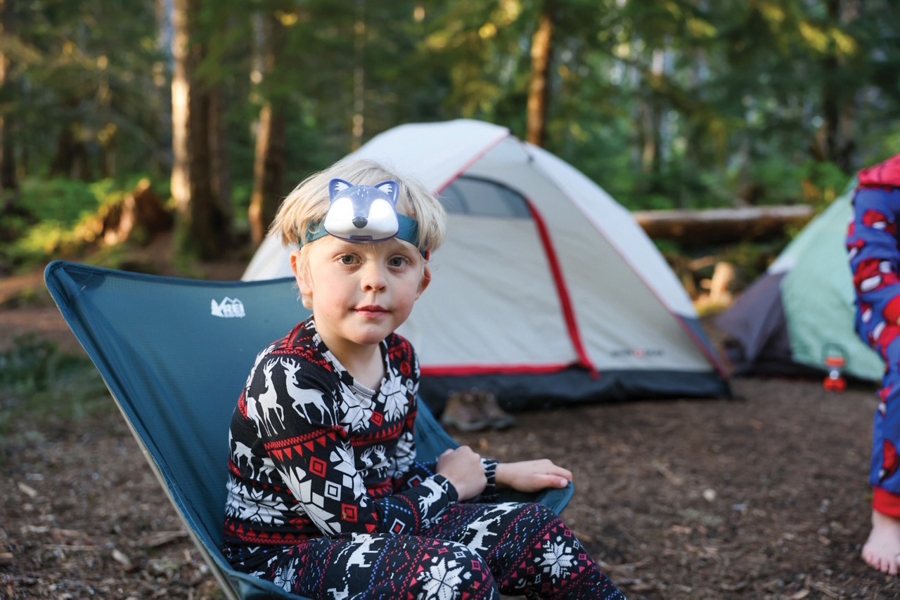
Finding success on your first time out
Koehn says backpacking with his kids has been magical.
“You get to see everything through a new lens, as if you’re seeing it for the first time. It makes it feel new again,” he says.
He encourages families that are interested in backpacking to start slowly and notes there will be some trial and error. After every trip, Koehn says, his family looks back and takes inventory. What worked well? Is there something they wish they had done and hadn’t done?
“I’d love to save people some pain points,” says Koehn. “I want people to feel good about backpacking right off the bat. It’s one of the reasons I work at REI.”
Denson and Koehn say backpacking can also be more fun with friends, so invite others to come along.
They also recommend practicing before heading outdoors with all your gear. Camp in the backyard to get the lay of the land before heading to the backcountry.
“I think practicing in the yard is a great idea. You might discover things you need — or as important, things you don’t need,” says Denson.
